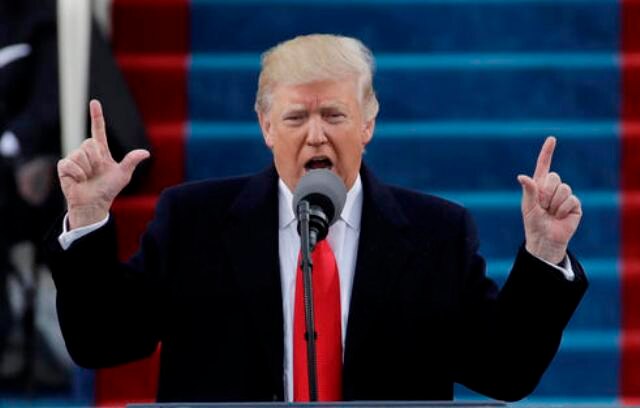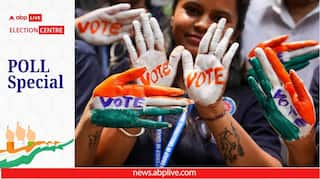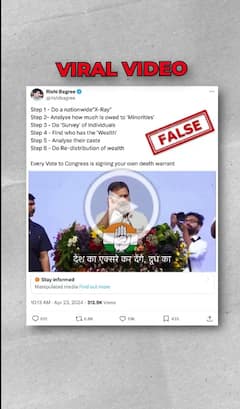Explorer
Advertisement

Trump and the techie

The storm of radical change within the US political system has finally reached the shores of this country. Soon after Donald Trump's election to the American presidency, it became clear that he intended to stick to most of his campaign promises, the larger world and the coastal elites be damned. Among the least controversial of his campaign proposals – as far as American voters were concerned – was to crack down on hiring foreign workers by companies operating in and out of the US.
A leaked draft of an executive order being prepared by the Trump administration shows that it will most likely impose severe curbs on a particular American visa category – the H-1B – for temporary technology workers. These visas have been the mainstay for American and Indian technology companies alike to in-source Indian engineers and programmers to the United States. Trump is not alone in seeking to crackdown on the H-1B visas.
Yesterday, a Democratic congresswoman from California – note these two facts carefully – tabled a bill in the US House of Representatives that would effectively disrupt the business model of Indian IT companies operating in the US. The tabled bill seeks to double the salary floor for H-1B applicants ensuring that those visas are not conduits to cheap immigrant labour (albeit of a relatively-skilled technical kind) displacing American workers. And as much as one may try to sugar-coat it, the fact remains that Indian IT firms have long sustained their businesses by getting Indian techies to do what American citizens would charge a lot more for.
A lot can be said about future of Indian technology companies in the era of disruptions – political (rising protectionism in the west) as well as technological (the advent of artificial intelligence that can effectively take over humans when it comes to cyber-menial jobs). But the larger question around this gathering storm is this. What does a severe American stance towards Indian technology workers mean for the Indo-US relationship?
Analysts trace the dramatic improvement in the India-US relationship to the late 1990s, towards the end of the Clinton administration. A marquee event of that era was Clinton effectively communicating to Pakistan that it could no longer seek cover in American patronage, during the Kargil war of 1999. But the turn of the millennium was also marked by a significant rise in the number of Indian techies in the US, fuelled both by the dot-com bubble of the 1990s as well as hysteria around the Y2K computer bug.
Since then, the convergence of hard-strategic interests between the two countries have been complimented by economic symbiosis. The former was cemented around the common threat from China and radical Islamism. The latter was driven by what Indians proudly claim to be their greatest export: software engineers. While the two has no logical links, prominent Indian and American analysts have long argued that the political leg of the relationship stands to be balanced by greater economic cooperation.
With economic and political goals of the two countries complementing each other, India will rise to its true glory in the Asian century with American support – the story went.
All was not well in this imagined paradise even before Mr. Trump came to Washington. While Pentagon officials were warmly received in New Delhi for defence-related discussions, India and the US bickered with alarming regularity in the World Trade Organization and elsewhere. New Delhi viewed the US Secretary of Defence with much sympathy, the United States Trade Representative with much suspicion.
Beyond the issue of visas for Indian workers, the US and India have clashed over agricultural subsidies, generic pharmaceuticals and intellectual-property-rights issues in the past. One suspects that the Trump administration will go much further to emphasize these other latently-protectionist concerns. If the US does go ahead and press for much more stringent conditions for the issuance of H-1B visas, the economic leg of the US-India relationship would be in coma for a long time.
The question for Indian mandarins would be this: Can India and US continue to cooperate strategically (assuming Trump doesn't strike a grand bargain with China and/or Pakistan) while the crown jewel of India's new economy – its technology sector – continue to be hammered by American lawmakers? Unlikely, given Prime Minister Modi's economy-first grand strategy for Indian foreign policy.
A major mantra of Modi's foreign policy is the maxim that the “business of diplomacy must be a business,” according to prominent Indian analyst C. Raja Mohan. Add to this Modi's pride in India's information-technology sector – and his stated fondness for the Indian diaspora. If he sees the United States government specifically target Indian technology workers, it is unlikely that this would be a slight he will ignore.
What, then, are the options for the foreign office? Usually, Indian diplomats and lobbyists would work over time to reach out to the administration and the Congress and hope for a softening of position through give-and-take. But this is no usual administration and the public mood was clear on November 8, 2016. Inability to prevent Americans from going after Indian techies could very well become the worst hit India's diplomatic apparatus has taken in a couple of decades.
Disclaimer: The opinions, beliefs and views expressed by the various authors and forum participants on this website are personal and do not reflect the opinions, beliefs and views of ABP News Network Pvt Ltd.
Follow Blog News on abp LIVE for more latest stories and trending topics. Watch breaking news and top headlines online on abp News LIVE TV
View More
Advertisement
Advertisement
Advertisement
Advertisement
Trending News

for smartphones
and tablets
and tablets




























